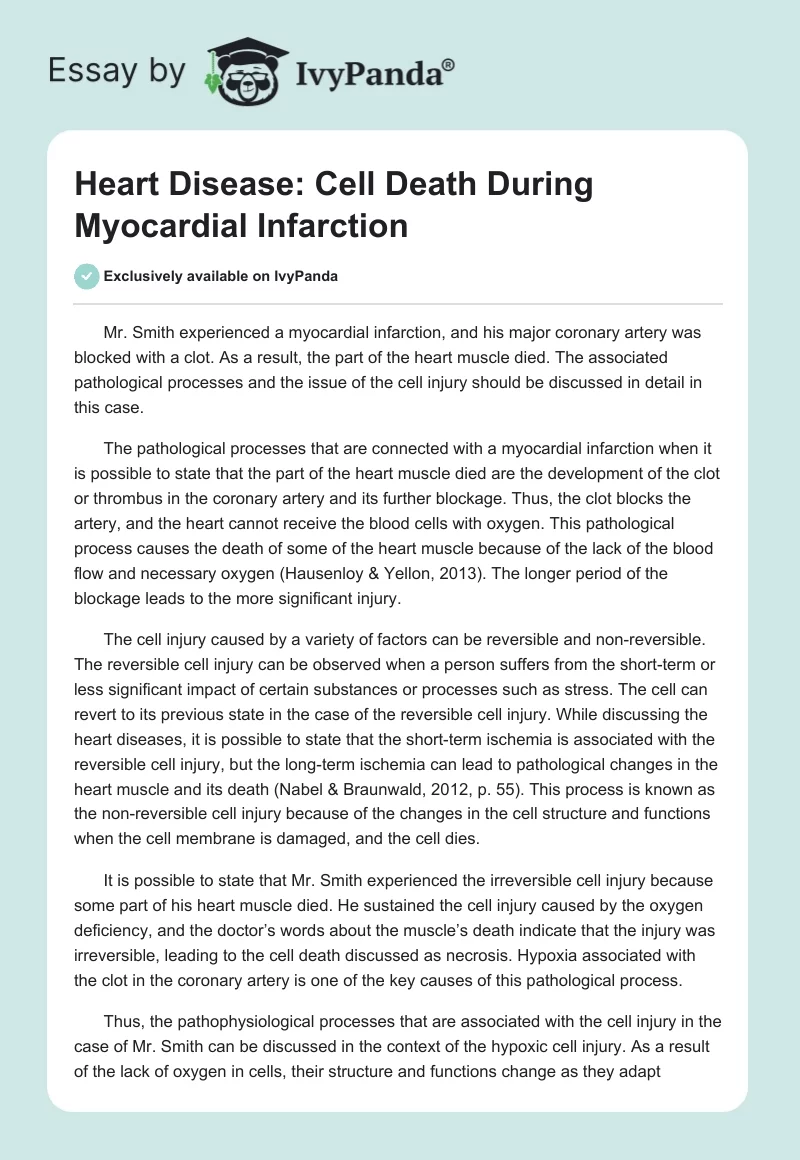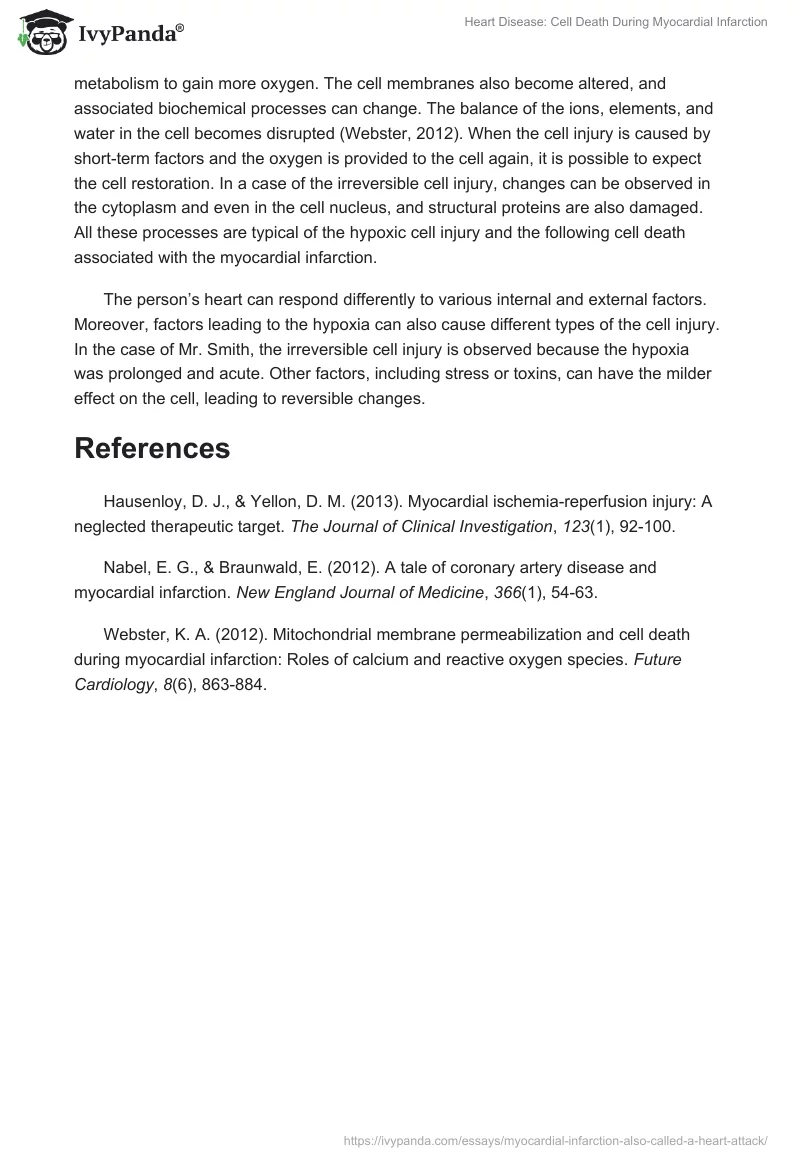Mr. Smith experienced a myocardial infarction, and his major coronary artery was blocked with a clot. As a result, the part of the heart muscle died. The associated pathological processes and the issue of the cell injury should be discussed in detail in this case.
The pathological processes that are connected with a myocardial infarction when it is possible to state that the part of the heart muscle died are the development of the clot or thrombus in the coronary artery and its further blockage. Thus, the clot blocks the artery, and the heart cannot receive the blood cells with oxygen. This pathological process causes the death of some of the heart muscle because of the lack of the blood flow and necessary oxygen (Hausenloy & Yellon, 2013). The longer period of the blockage leads to the more significant injury.
The cell injury caused by a variety of factors can be reversible and non-reversible. The reversible cell injury can be observed when a person suffers from the short-term or less significant impact of certain substances or processes such as stress. The cell can revert to its previous state in the case of the reversible cell injury. While discussing the heart diseases, it is possible to state that the short-term ischemia is associated with the reversible cell injury, but the long-term ischemia can lead to pathological changes in the heart muscle and its death (Nabel & Braunwald, 2012, p. 55). This process is known as the non-reversible cell injury because of the changes in the cell structure and functions when the cell membrane is damaged, and the cell dies.
It is possible to state that Mr. Smith experienced the irreversible cell injury because some part of his heart muscle died. He sustained the cell injury caused by the oxygen deficiency, and the doctor’s words about the muscle’s death indicate that the injury was irreversible, leading to the cell death discussed as necrosis. Hypoxia associated with the clot in the coronary artery is one of the key causes of this pathological process.
Thus, the pathophysiological processes that are associated with the cell injury in the case of Mr. Smith can be discussed in the context of the hypoxic cell injury. As a result of the lack of oxygen in cells, their structure and functions change as they adapt metabolism to gain more oxygen. The cell membranes also become altered, and associated biochemical processes can change. The balance of the ions, elements, and water in the cell becomes disrupted (Webster, 2012). When the cell injury is caused by short-term factors and the oxygen is provided to the cell again, it is possible to expect the cell restoration. In a case of the irreversible cell injury, changes can be observed in the cytoplasm and even in the cell nucleus, and structural proteins are also damaged. All these processes are typical of the hypoxic cell injury and the following cell death associated with the myocardial infarction.
The person’s heart can respond differently to various internal and external factors. Moreover, factors leading to the hypoxia can also cause different types of the cell injury. In the case of Mr. Smith, the irreversible cell injury is observed because the hypoxia was prolonged and acute. Other factors, including stress or toxins, can have the milder effect on the cell, leading to reversible changes.
References
Hausenloy, D. J., & Yellon, D. M. (2013). Myocardial ischemia-reperfusion injury: A neglected therapeutic target. The Journal of Clinical Investigation, 123(1), 92-100.
Nabel, E. G., & Braunwald, E. (2012). A tale of coronary artery disease and myocardial infarction. New England Journal of Medicine, 366(1), 54-63.
Webster, K. A. (2012). Mitochondrial membrane permeabilization and cell death during myocardial infarction: Roles of calcium and reactive oxygen species. Future Cardiology, 8(6), 863-884.


